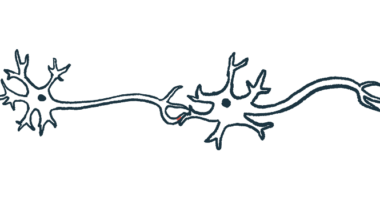VO659 found to lower mutant HTT protein in Huntington’s patients
Therapy shows favorable safety, efficacy profile in trial, per interim data

Vico Therapeutics’ investigational therapy VO659 was found to lower levels of the disease-causing mutant huntingtin (HTT) protein — known as mHTT — in the cerebrospinal fluid (CSF), the liquid that surrounds the brain and spinal cord, of people with Huntington’s disease.
Additionally, treatment was not associated with an increase in CSF levels of neurofilament light chain (NfL), a marker of nerve cell damage, further supporting the therapy’s favorable safety and efficacy profiles.
That’s according to interim data from the 40 mg dose group of an ongoing Phase 1/2a clinical trial (NCT05822908), which is testing the therapy candidate in up to 65 adults with early-stage Huntington’s and other conditions caused by a mutation called CAG repeat expansion.
VO659 stands out from other Huntington’s candidates in clinical trials as it is designed to directly target the disease’s underlying cause, suppressing the production of mHTT while leaving the healthy version of the protein unaffected.
“The Phase 1/2a interim clinical data reinforce the potent, targeted nature of VO659 and add to a growing body of evidence supporting VO659’s advancement in the clinic for HD [Huntington’s disease] as well as its broad potential applications for all CAG repeat expansion diseases,” Scott Schobel, MD, Vico’s chief medical officer, said in a company press release.
VO659 aims to prevent mutant HTT protein from being produced
Building on these promising early data, which were recently presented at the European Huntington’s Disease Network’s EHDN & Enroll-HD 2024 meeting in Strasbourg, France, Vico is planning to meet with regulators later this year to discuss the best clinical trial path for a potential VO659 approval.
“These data are a significant milestone for our team and for the HD community that so desperately needs treatment options, and we look forward to continuing assessments from the trial and advancing VO659 as quickly as possible for patients and their families,” said Micah Mackison, Vico’s CEO.
Huntington’s is caused by excessive repeats of three DNA building blocks — C, A, and G — in the HTT gene, which codes for the huntingtin protein. The resulting mutant protein is longer than normal and prone to form clumps that are damaging to nerve cells, leading to Huntington’s symptoms.
VO659 is a short strand of genetic material that prevents the mHTT protein from being produced. It works by binding to and shutting off its messenger RNA (mRNA), the intermediate molecule derived from DNA that guides protein production.
In both the U.S. and Europe, VO659 has received orphan drug designation from regulators as a Huntington’s treatment. That designation provides a therapy’s developer with incentives to accelerate a treatment’s clinical development and regulatory review.
It is highly encouraging that we saw immediate reductions in [cerebrospinal fluid levels of] mHTT and no changes in [NfL] protein, two key biomarkers in HD, in treated patients over the available follow-up period.
The ongoing, international clinical trial, which began dosing last year, is evaluating the safety, tolerability, pharmacokinetics, and pharmacodynamics of four doses of VO659. Pharmacokinetics refers to a therapy’s movement into, through, and out of the body, while pharmacodynamics is a therapy’s effects on the body.
The trial enrolled adults, ages 25-60, with early-stage Huntington’s or other CAG repeat expansion diseases, known as spinocerebellar ataxia type 1 (SCA1) and type 3 (SCA3).
All participants are receiving the therapy intrathecally, or by injection into the spinal canal, once every four weeks.
These newly presented interim data come from Huntington’s patients who received a VO659 dose of 40 mg. An analysis of their CSF revealed an average 28% reduction in mHHT levels after 85 days, or nearly three months, with an immediate effect observed after the first dose at day 29, or about a month into the trial.
In addition to showing favorable safety and tolerability profiles through the available clinical follow-up period, the 40 mg dose of VO659 did not result in sustained changes in CSF NfL levels.
Per the pharmacokinetics data, VO659 was estimated to have a long half-life, which means it stays active in the body for a relatively long time. According to Vico, this means that patients may need to receive the therapy only once or twice a year.
“It is highly encouraging that we saw immediate reductions in CSF mHTT and no changes in [NfL] protein, two key biomarkers in HD, in treated patients over the available follow-up period,” Mackison said. “Given VO659’s long anticipated half-life, there is clear potential for this therapy to have an infrequent dosing schedule, and we look forward to exploring this further in clinical trials.”







